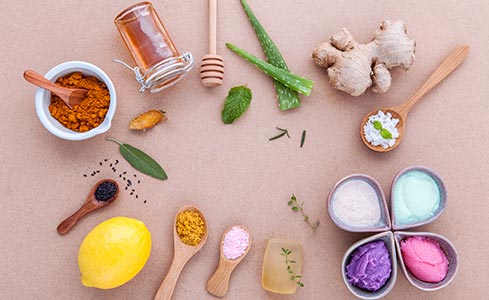
Dealing with acne can be a frustrating and confidence-shaking experience. Many of us have tried various non-prescription acne treatments in the hopes of achieving clear and radiant skin. But the question lingers: Are these over-the-counter remedies effective, or are we just chasing after empty promises?
In this blog, we'll delve into the world of non-prescription acne treatments, exploring their effectiveness, key ingredients, and tips for choosing the right products for your skin.
Non-prescription acne treatments, commonly known as over-the-counter (OTC) products, are those one can purchase without a prescription from a healthcare professional. These products are easily accessible at the local pharmacy or grocery store, offering a convenient and seemingly cost-effective solution for managing acne. The most common non-prescription acne treatments include cleansers, toners, anti-acne gel, and masks.
Non-prescription acne treatments offer a diverse array of options catering to different skin types and concerns. They are often readily available over the counter and can be more affordable than prescription options. These treatments usually contain active ingredients that target acne-causing bacteria, regulate oil production, and exfoliate dead skin cells.
Here are some of the ingredients to look for in non-prescription products -
For mild-to-moderate acne, Mankind AcneStar gel serves as an effective initial defence. With consistent use, it maintains clear, radiant skin, combating common breakouts effectively. The combination of Clindamycin and Nicotinamide in this gel helps to decrease acne in just 7 days while being safe for the skin. Additionally, it effectively reduces blackheads and whiteheads.
Here are the steps for correctly applying anti-acne gel to maximize results:
Before applying non-prescription acne gels, wash your face with a gentle cleanser and pat it dry. This removes excess oil, dirt, and impurities, ensuring better absorption of the gel into the skin.
Squeeze out a small amount of gel, approximately the size of a pea, onto your fingertips. Using too much can lead to over-application and potential skin irritation.
Gently spread the gel over the areas affected by acne, such as the forehead, cheeks, chin, and nose. Avoid the delicate eye area, lips, and mucous membranes.
Massage the gel into the skin using a light, circular motion. This helps evenly distribute the product and ensures thorough coverage of the affected areas.
Allow the gel to fully absorb into the skin before applying any other skincare products or makeup. This usually takes a few minutes.
Begin with a small amount of gel to assess how your skin reacts. If no adverse reactions occur after a few days, gradually increase the amount as needed.
Consistency is key to seeing results. Apply the gel twice daily, ideally in the morning and evening, to maintain a consistent treatment routine and maximize its effectiveness in combating acne.
Non-prescription acne treatments prove effective for many individuals grappling with mild-to-moderate acne. Finding the best skincare product, though, can be a bit tricky, with so many options out there. If you are looking for a great and effective product, AcneStar Gel is a top-notch choice. Our clear gel has anti-inflammatory and antibacterial properties that address acne, pimples, whiteheads, and blackheads, dispelling concerns about skin imperfections.
Disclaimer This blog solely intended for the educational/informational/awareness purposes and is not a substitute for any professional medical advice, diagnosis or treatment. Please consult your doctor/healthcare professional before acting on the information provided on the blog. Reliance on any or all information provided in the blog, is solely at your own risk and responsibility. Mankind Pharma Limited shall not be held liable, in any circumstance whatsoever.

Acne is a skin condition that occurs when your hair follicles become plugged with oil and dead skin cells.

it is absolutely imperative to know its type. Acne can be inflammatory or non-inflammatory which further has different lesions, as mentioned below.

Acne starts occurring in teenagers due to an increase in the level of Androgen production. Androgen is a hormone which signals the body to produce more sebum, the oil produced by the sebaceous glands.

Acne is a skin condition that occurs when your hair follicles become plugged with oil and dead skin cells. It often causes whiteheads, blackheads or pimples, and usually appears on the face, forehead, chest, upper back and shoulders. Acne is most common among teenagers, though it affects people of all ages.

Debunk acne myths by following a proper skincare regimen. Taking good care of your skin can help you achieve a glowing and acne-free skin.